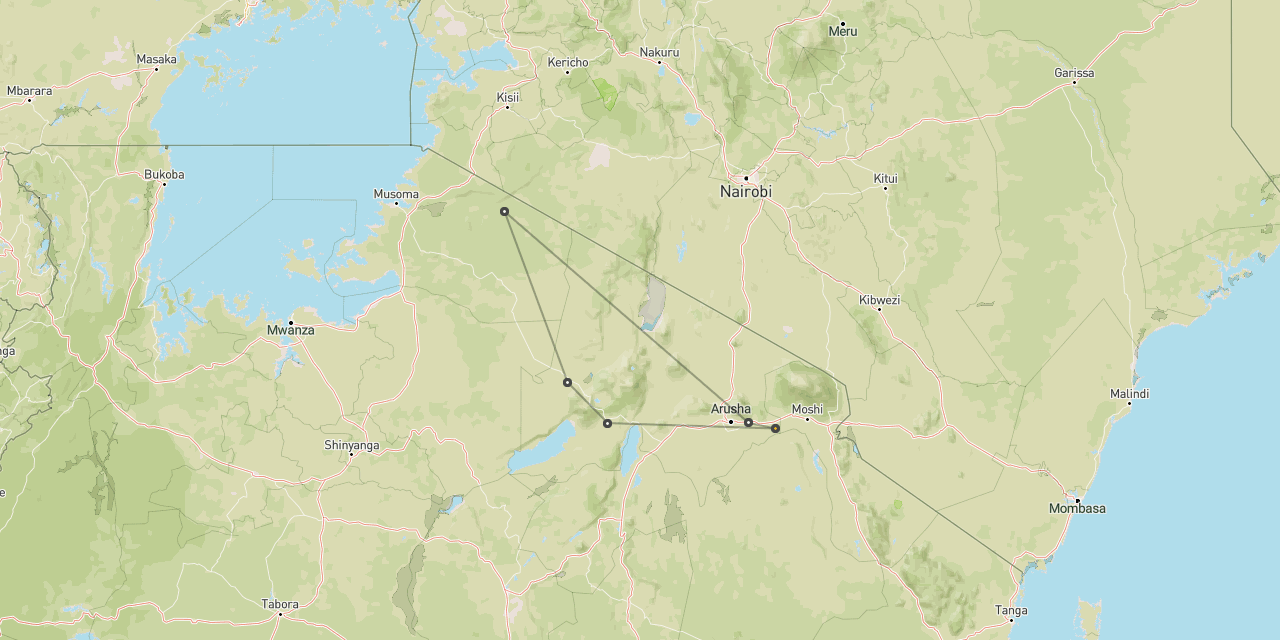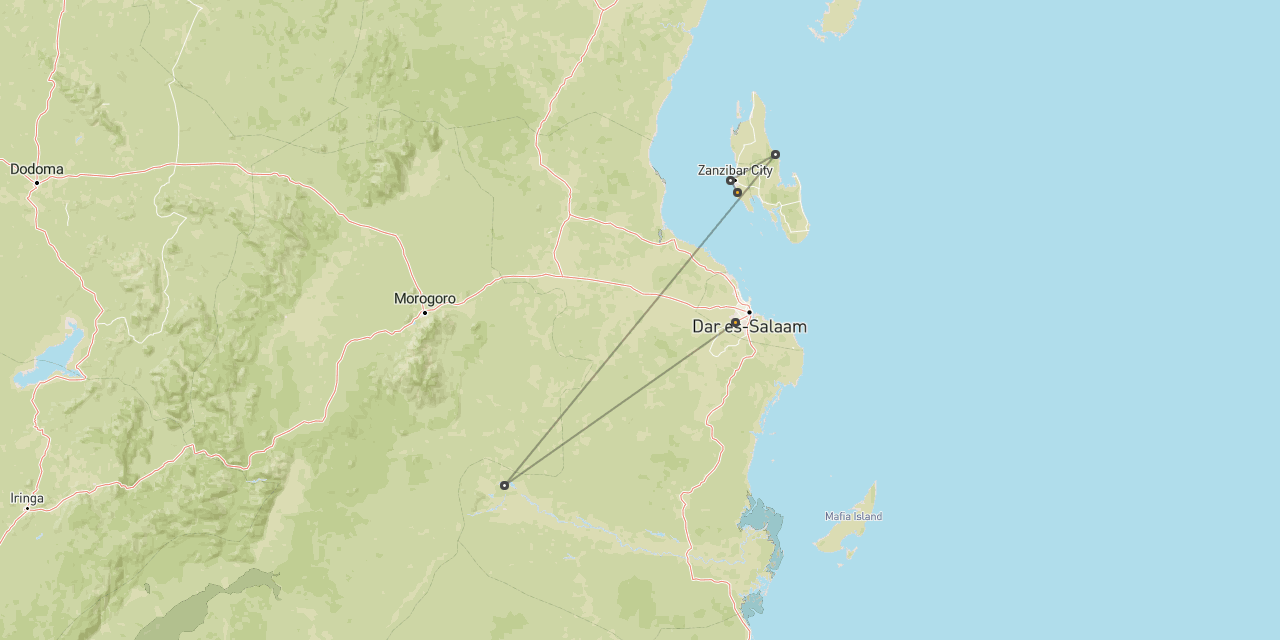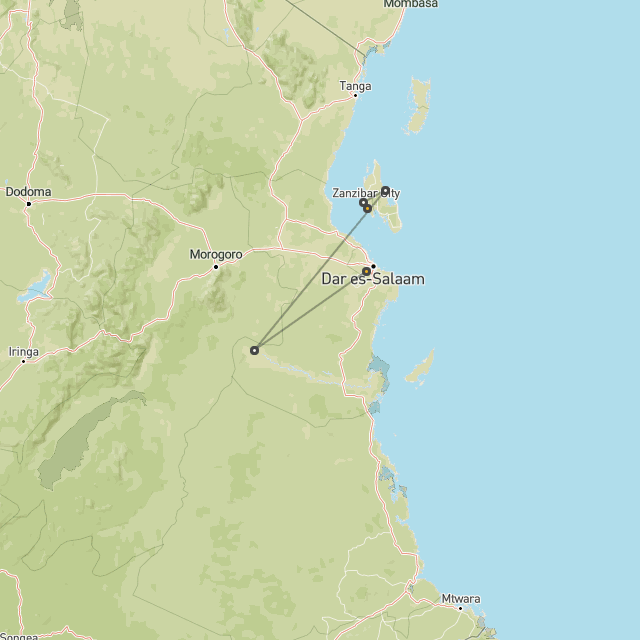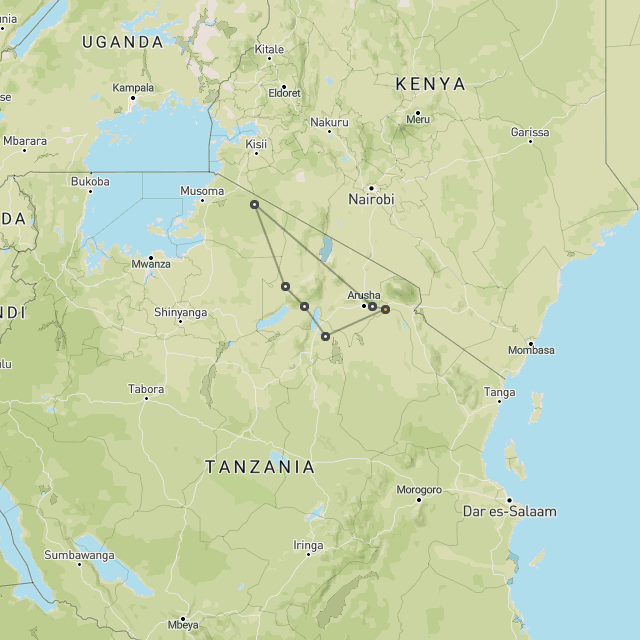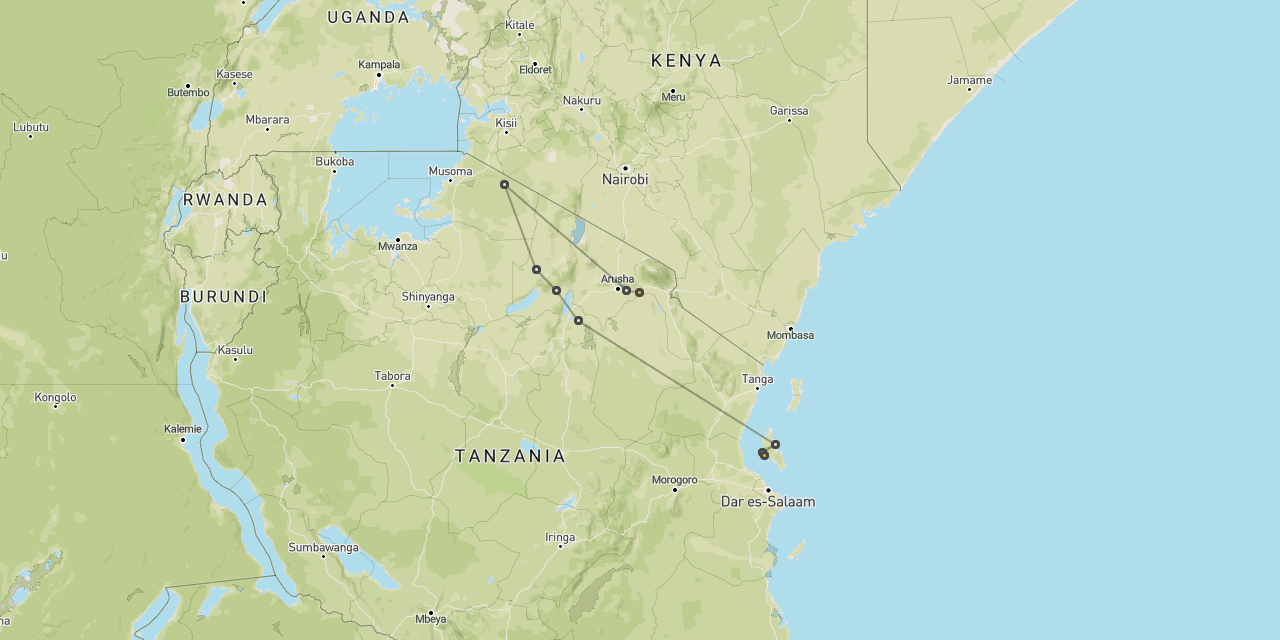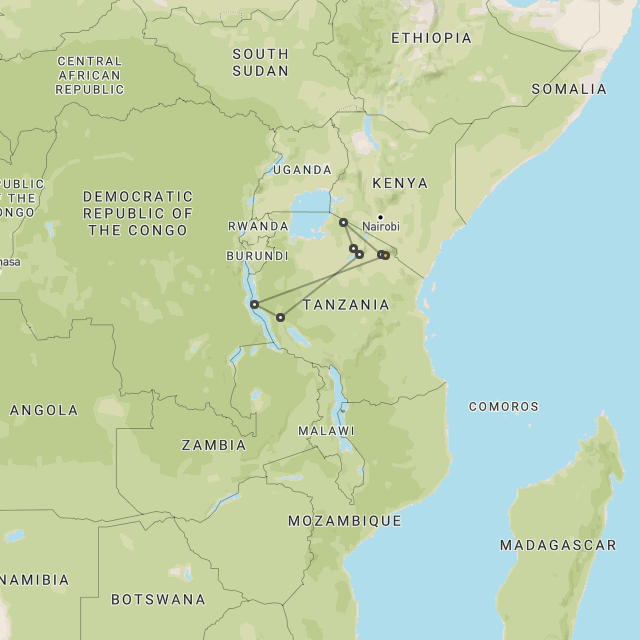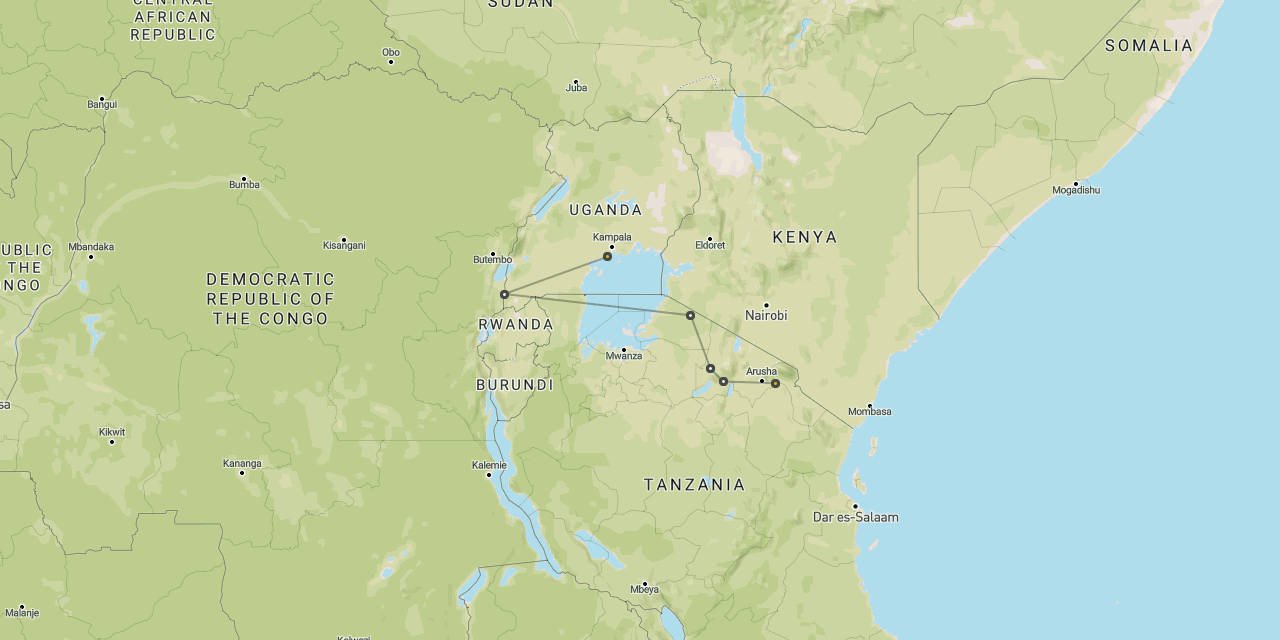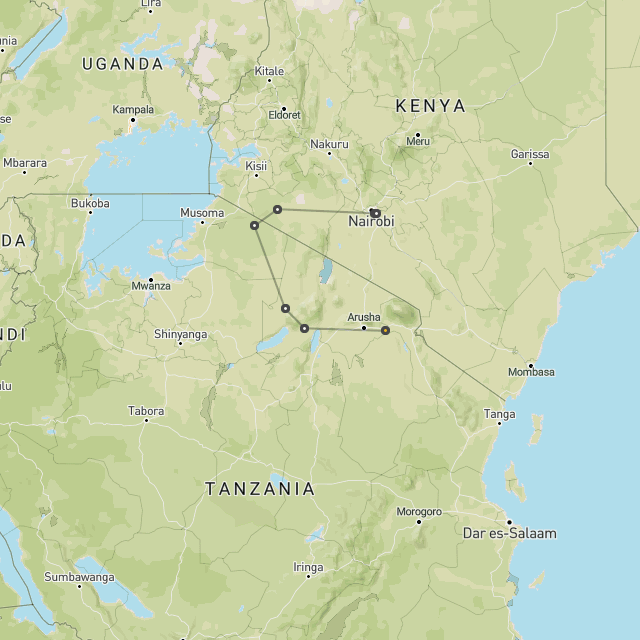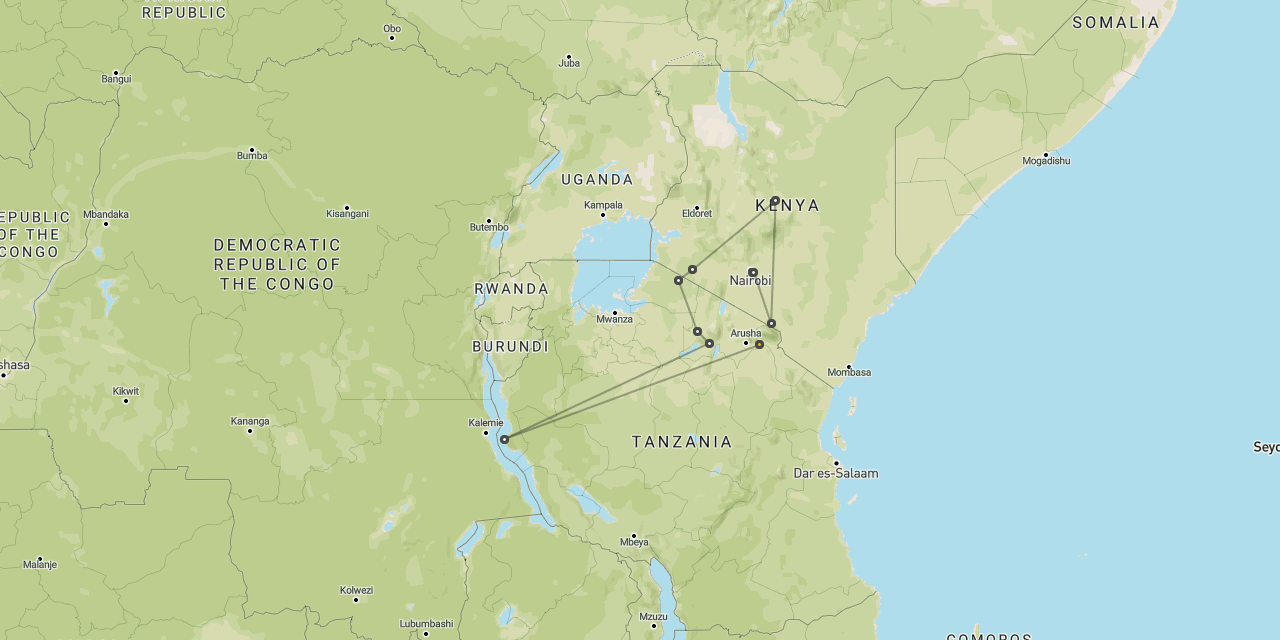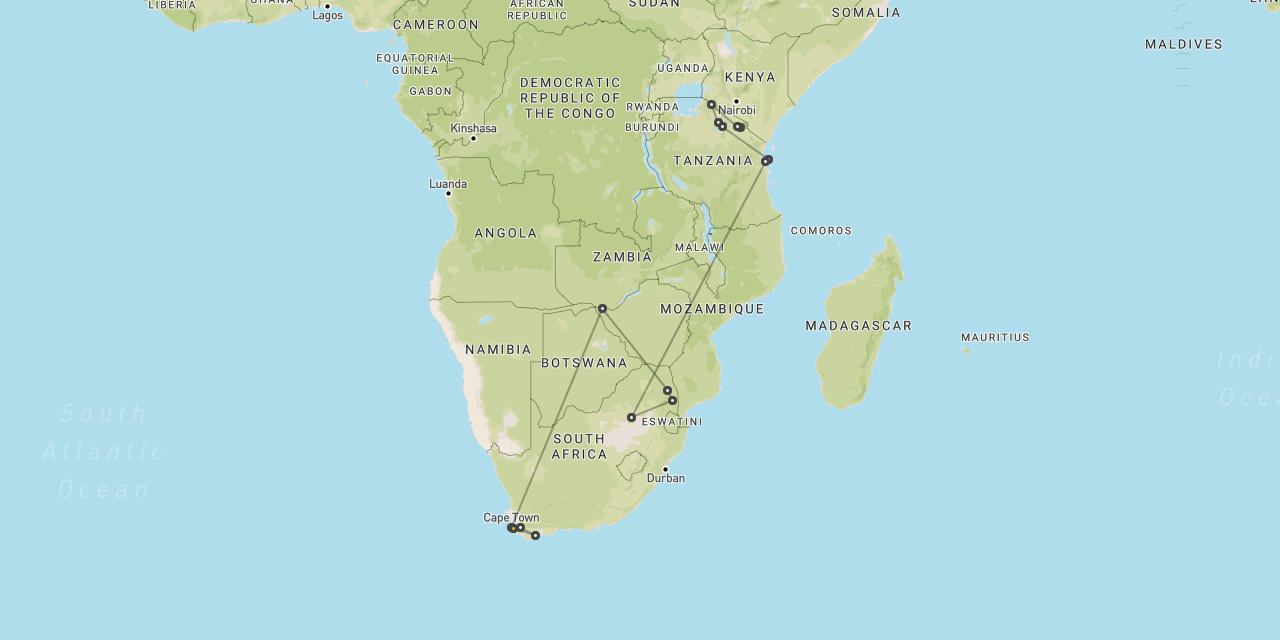
The geography of Udzungwa
Udzungwa
offers fascinating biology
and some impressive hiking

The geography of Udzungwa Mountains
far older than the volcanic mountains of the north
The Udzungwa Mountains are of particular ecological significance as they form a part of the East Arc Mountains, which stretch from the south of the country, up through the Usambara Mountains in the north-east and over to the Shimba Hills in south-east Kenya.
The mountains are ancient, substantially pre-dating all of the overlying volcanic mountains and Rift Valley scenery.
Over the millennia, Africa has gone through alternate cycles of desertification to reforestation, the continent has gone from yellow to green and back to yellow. But these forested mountains have remained green throughout, providing one of the most stable environments in the world.
Stable climates provide plenty of time for evolution to take place, so plants and animals have time to adapt and modify themselves to take advantage of every possible niche by developing ever increasing levels of specialisation.
The forests and high altitude grasslands of the Eastern Arc Mountains therefore harbour an incredible biodiversity. There are so many endemic species here that these mountain islands are sometimes referred to as ‘the Galapagos of Africa’.
Alongside more regular animals like elephants, leopards, civets, genets and a whole host of shy and elusive forest creatures, the area is able to claim three unique primates, a fabulous recently-discovered giant elephant shrew and at least 25 otherwise unknown bird species. That really is a lot of diversity in such a small area.
A small proportion of international visitors to Tanzania are naturalists who come here specifically to explore these East Arc Mountains, having developed a specific intellectual interest in the flora or fauna of the area, often inspired by Jonathon Kingdon’s excellent book Island Africa.

Hiking trails in Udzungwa Mountains
short hikes to multiple day treks
The Udzungwa Mountains area contains some very accessible hiking trails and offers the possibility of multiple day treks.
Prince Bernhard Waterfall Trail
The easiest is the Prince Bernhard Waterfall Trail, which leads for around 1 km from the Udzungwa National Park gate across relatively flat terrain to a modest waterfall.
No guide is required, which means that you are free to take your time and really immerse yourself in the forest.
Highlights include blue monkey and the endemic red colobus, the impressive chequered elephant shrew and the red duiker.
Birding is erratic, but you may be lucky enough to encounter a crowned hornbill or green headed oriole.
Sanje Waterfall Trail
The most popular outing is the four hour guided trek up the Sanje Waterfall Trail.
Hikers may see red colobus and black-and-white colobus monkeys along the route, along with some interesting birds.
The Sanje crested mangabey (monkey), although having been first discovered in the vicinity of the falls, is unlikely to be seen.
The falls themselves cascade in steps down a drop of 300m, with a pool at the foot in which swimming is permitted and which sometimes attracts a fabulous array of butterflies.
Mwanihana Trail
The longest hike is along the Mwanihana Trail, a three day trek to the second highest peak in the reserve, at 2150m.
The two nights are spent at bivouac camps, with all equipment needing to be portered or carried by trekkers.
This is the only trail which provides proper access to the closed canopy montane forest for which the reserve is best known, as well as the grassland habitats of higher altitudes.
An armed ranger is required since encounters with buffaloes and elephants are likely.

Further reading
let us know your thoughts about Tanzania
and we will help you create the perfect trip

Extraordinary tailor-made adventures,
from earthy and edgy to easy and extravagant
From around USD 2500 per person, you set the ceiling

Get started on your trip
It’s never too soon to get in touch, we are here to help with every stage of your planning.
Sample Trips
Here are some of our popular trip shapes
Best Lodges
We regularly inspect and photograph all of the the best lodges, to ensure that we always recommend the most suitable options
Key Locations
Take a look around related locations. Click ‘View more’ to explore locations further afield.
Where Next?
Where Next?
We offer trips to dozens of fabulous countries.
Might one of these might be your next great adventure?

Please rotate your screen.
